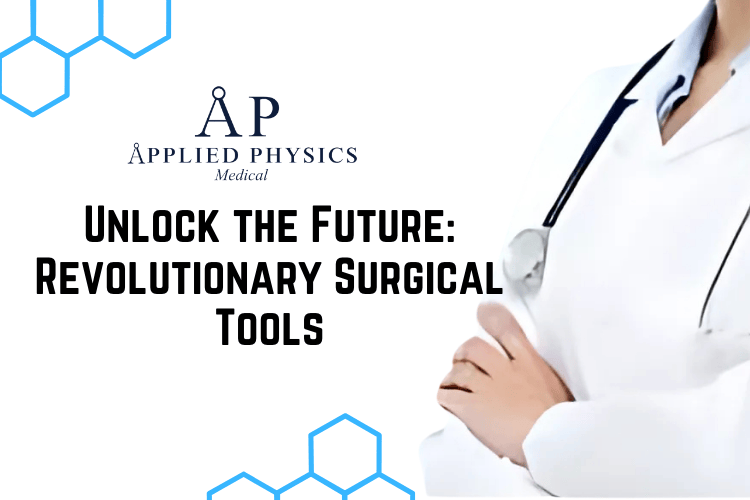Introduction
The landscape of surgery has undergone a profound transformation over the past few decades, largely due to the advent of revolutionary surgical tools. These innovations have not only enhanced the precision and efficiency of surgical procedures but have also significantly improved patient safety and recovery times. From advanced suturing devices to high-definition imaging systems, the tools available to surgeons today are designed to facilitate more effective interventions while minimizing trauma to the patient.
This evolution reflects a broader trend in medicine towards integrating technology with traditional practices, ultimately aiming to enhance the overall quality of care. As we delve deeper into the realm of surgical innovation, it becomes evident that these tools are not merely enhancements but rather essential components of modern surgical practice. They enable surgeons to perform complex procedures with greater accuracy and less invasiveness, which is crucial in reducing complications and promoting faster healing.
Key Takeaways
- Revolutionary surgical tools are transforming the way surgeries are performed, leading to better patient outcomes and recovery.
- Minimally invasive surgical techniques and robotics are playing a significant role in modern surgery, allowing for more precise and less invasive procedures.
- Cutting-edge imaging technology is revolutionizing surgical procedures by providing surgeons with detailed and real-time images for better decision-making during surgeries.
- Future trends in surgical instrumentation and technology are focused on further enhancing precision, efficiency, and safety in surgical procedures.
- Training and education are crucial in utilizing revolutionary surgical tools effectively, ensuring that surgeons are skilled and competent in using the latest advancements in surgical technology.
The Impact of Revolutionary Surgical Tools on Patient Outcomes
The introduction of revolutionary surgical tools has had a remarkable impact on patient outcomes, fundamentally altering the trajectory of surgical care. For instance, the use of laparoscopic instruments has allowed for minimally invasive surgeries that result in smaller incisions, reduced pain, and shorter hospital stays. Studies have shown that patients undergoing laparoscopic procedures often experience less postoperative discomfort and a quicker return to normal activities compared to those who undergo traditional open surgeries.
This shift not only enhances patient satisfaction but also reduces healthcare costs associated with longer recovery times. Moreover, advanced surgical tools equipped with real-time data analytics and monitoring capabilities have improved decision-making during procedures. Surgeons can now access critical information instantaneously, allowing for adjustments on the fly that can lead to better outcomes.
Advancements in Minimally Invasive Surgical Techniques
Minimally invasive surgical techniques have revolutionized the way surgeries are performed, with advancements in surgical tools playing a pivotal role in this evolution. Techniques such as laparoscopic surgery, robotic-assisted surgery, and endoscopic procedures have gained prominence due to their ability to reduce trauma to the body while maintaining surgical efficacy. These methods rely on specialized instruments that allow surgeons to operate through small incisions, thereby minimizing tissue damage and expediting recovery.
The benefits of minimally invasive techniques extend beyond physical recovery; they also encompass psychological aspects of patient care. Patients often report lower anxiety levels when facing surgeries that promise quicker recoveries and less visible scarring. Furthermore, the reduced need for extensive postoperative care translates into shorter hospital stays and less time away from work or daily activities.
The Role of Robotics in Modern Surgery
| Metrics | Data |
|---|---|
| Number of robotic surgeries performed annually | Over 1.75 million globally |
| Percentage of prostatectomies performed robotically | Around 80% |
| Reduction in blood loss compared to traditional surgery | Up to 50% |
| Percentage of hospitals in the US with robotic surgery capabilities | Over 80% |
| Cost of a surgical robot system | Around 2 million to 3 million |
Robotic technology has emerged as a game-changer in modern surgery, offering unprecedented precision and control during complex procedures. Robotic surgical systems, such as the da Vinci Surgical System, allow surgeons to perform intricate maneuvers with enhanced dexterity and visualization. These systems translate the surgeon’s hand movements into smaller, more precise actions performed by robotic instruments, which can navigate tight spaces within the body with remarkable accuracy.
The advantages of robotic-assisted surgery are manifold. Surgeons can operate from a console equipped with high-definition 3D visualization, providing a clearer view of the surgical field than traditional methods allow. This enhanced perspective is particularly beneficial in delicate procedures such as prostatectomies or cardiac surgeries, where precision is paramount.
Additionally, robotic systems often lead to reduced blood loss and lower rates of infection, further contributing to improved patient outcomes. As technology continues to advance, the integration of robotics into surgical practice is expected to expand, paving the way for even more sophisticated interventions.
Cutting-edge Imaging Technology in Surgical Procedures
Imaging technology has become an indispensable aspect of modern surgical procedures, providing surgeons with critical insights that enhance their ability to perform complex operations safely and effectively. Techniques such as intraoperative ultrasound, MRI, and CT scans allow for real-time visualization of anatomical structures during surgery. This capability is particularly valuable in fields like neurosurgery and oncology, where precise localization of tumors or critical structures is essential for successful outcomes.
The integration of imaging technology into surgical practice not only improves accuracy but also enhances communication among surgical teams. Surgeons can share visual data with anesthesiologists and nurses in real time, fostering a collaborative environment that prioritizes patient safety. Furthermore, advancements in augmented reality (AR) are beginning to play a role in surgery by overlaying digital images onto the surgeon’s view of the operating field.
Future Trends in Surgical Instrumentation and Technology
The Rise of Artificial Intelligence in Surgery
One significant trend is the increasing incorporation of artificial intelligence (AI) into surgical tools. AI algorithms can analyze vast amounts of data from previous surgeries to assist surgeons in making informed decisions during procedures. This technology has the potential to enhance preoperative planning and intraoperative navigation, ultimately leading to improved patient outcomes.
Personalized Surgical Instruments for Enhanced Effectiveness
Another emerging trend is the development of personalized surgical instruments tailored to individual patients’ anatomies. Advances in 3D printing technology allow for the creation of custom implants and tools that fit a patient’s unique anatomical features perfectly. This level of personalization can significantly enhance the effectiveness of surgical interventions while minimizing complications associated with ill-fitting devices.
A New Era of Precision Medicine in Surgery
As these trends continue to develop, they will undoubtedly contribute to a new era of precision medicine in surgery. With AI-powered tools and personalized instruments, surgeons will be able to provide more accurate and effective care, leading to better patient outcomes and improved healthcare overall.
The Importance of Training and Education in Utilizing Revolutionary Surgical Tools
The successful implementation of revolutionary surgical tools hinges on comprehensive training and education for healthcare professionals. As new technologies emerge, surgeons and operating room staff must receive adequate training to utilize these tools effectively. Simulation-based training programs have become increasingly popular, allowing surgeons to practice their skills in a risk-free environment before performing actual procedures.
Moreover, ongoing education is essential as technology continues to evolve rapidly. Surgeons must stay abreast of advancements in instrumentation and techniques to ensure they are providing the best possible care for their patients. Institutions are increasingly recognizing the importance of integrating training on new technologies into their curricula and continuing medical education programs.
Conclusion
The advent of revolutionary surgical tools is transforming the landscape of modern medicine, enhancing precision and patient outcomes. These innovations empower surgeons to perform complex procedures with unprecedented accuracy, reducing recovery times and improving overall efficiency. As technology continues to advance, the integration of such tools will be pivotal in shaping a future where surgeries are safer and more effective. The ongoing evolution in surgical instrumentation promises a new horizon in healthcare, benefiting both practitioners and patients alike.


